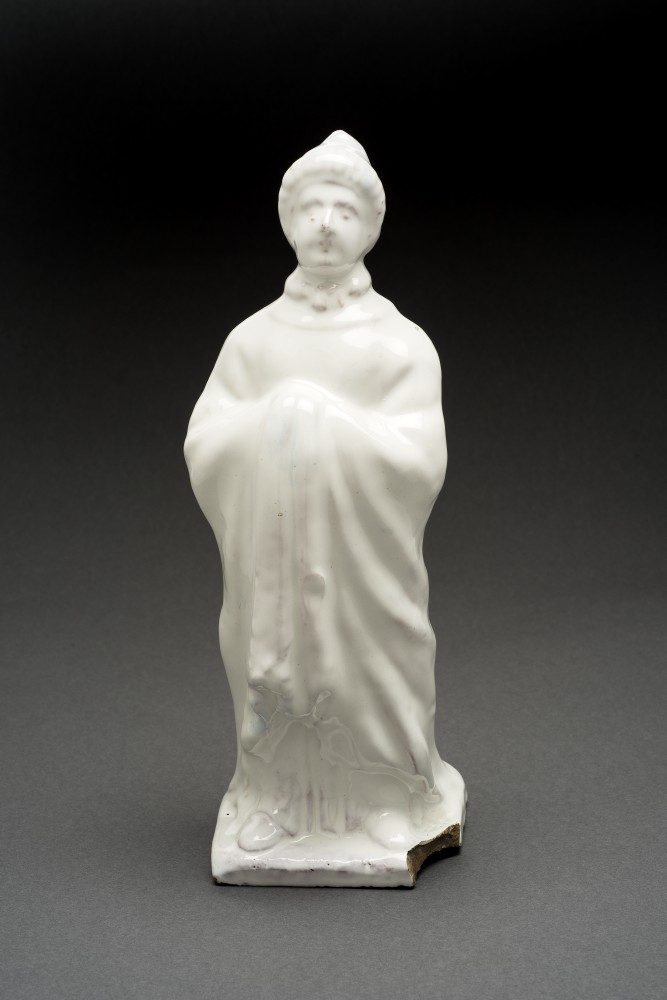Auf rechteckiger Standplatte stehende, hohl gearbeitete Chinesin in langem Unterkleid und weitem Obergewand. Die Arme sind vor dem Körper verschränkt und in die Ärmel geschoben, so dass das Gewand in einem Faltenbausch herabfällt und am Boden den Saum des darunter liegenden Kleides freigibt. Auf der Rückseite geht das Obergewand in die Standplatte über.
Glasurabplatzungen und Glasurabrieb an der Nase und der Frisur. Großer Ausbruch an der Standplatte.
Ohne Marke
Schenkung Herr Kestner, Leipzig, 1906
en

